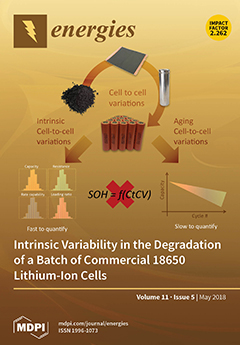Open AccessFeature PaperEditor’s ChoiceArticle
Plasma-Assisted Biomass Gasification with Focus on Carbon Conversion and Reaction Kinetics Compared to Thermal Gasification
by
Yin Pang, Leo Bahr, Peter Fendt, Lars Zigan, Stefan Will, Thomas Hammer, Manfred Baldauf, Robert Fleck, Dominik Müller and Jürgen Karl
Cited by 22 | Viewed by 7901
Abstract
Compared to conventional allothermal gasification of solid fuels (e.g., biomass, charcoal, lignite, etc.), plasma-assisted gasification offers an efficient method for applying energy to the gasification process to increase the flexibility of operation conditions and to increase the reaction kinetics. In particular, non-thermal plasmas
[...] Read more.
Compared to conventional allothermal gasification of solid fuels (e.g., biomass, charcoal, lignite, etc.), plasma-assisted gasification offers an efficient method for applying energy to the gasification process to increase the flexibility of operation conditions and to increase the reaction kinetics. In particular, non-thermal plasmas (NTP) are promising, in which thermal equilibrium is not reached and electrons have a substantially higher mean energy than gas molecules. Thus, it is generally assumed that in NTP the supplied energy is utilized more efficiently for generating free radicals initiating gasification reactions than thermal plasma processes. In order to investigate this hypothesis, we compared purely thermal to non-thermal plasma-assisted gasification of biomass in steam in a drop tube reactor at atmospheric pressure. The NTP was provided by means of gliding arcs between two electrodes aligned in the inlet steam flow with an electric power of about 1 kW. Reaction yields and rates were evaluated using measured gas temperatures by the optical technique. The first experimental results show that the non-thermal plasma not only promotes the carbon conversion of the fuel particles, but also accelerates the reaction kinetics. The carbon conversion is increased by nearly 10% using wood powder as the fuel. With charcoal powder, more than 3% are converted into syngas.
Full article
►▼
Show Figures





